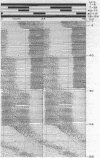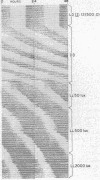Full text
PDF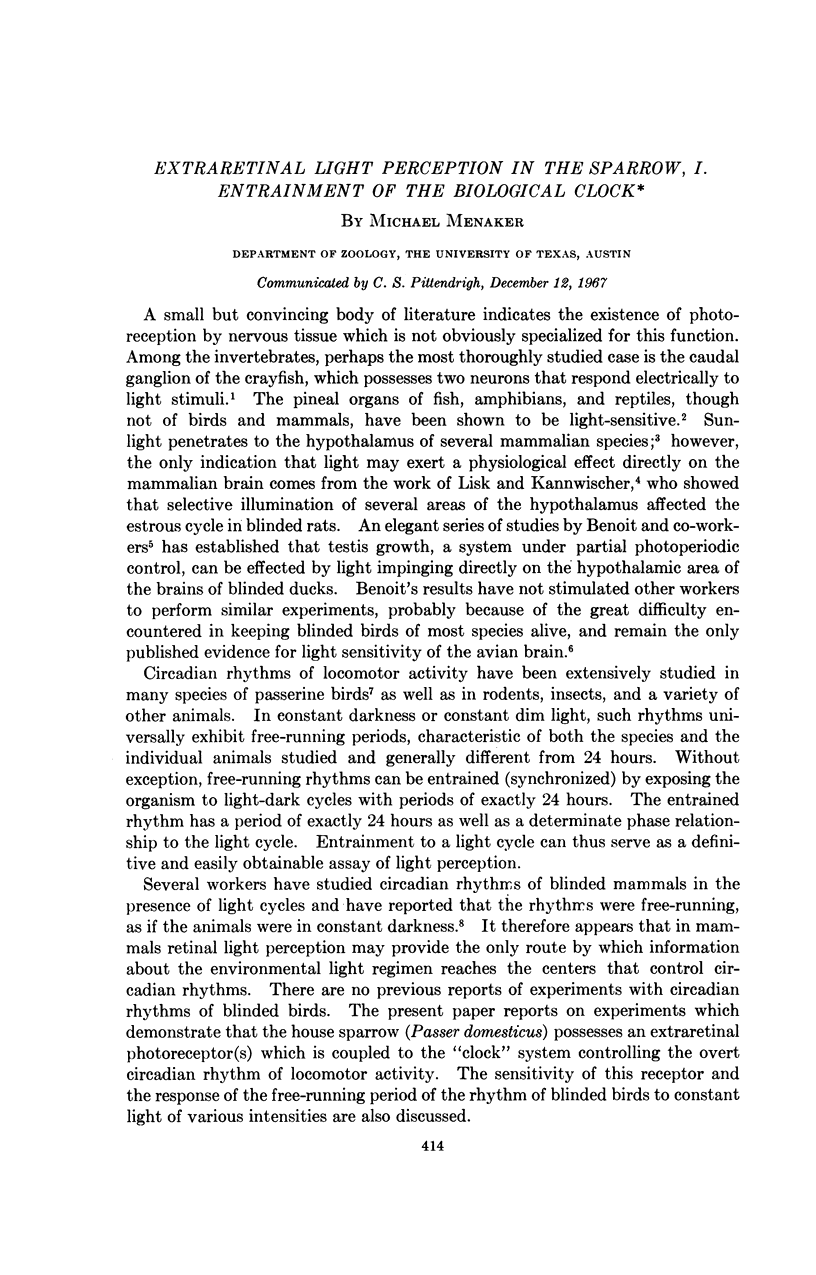
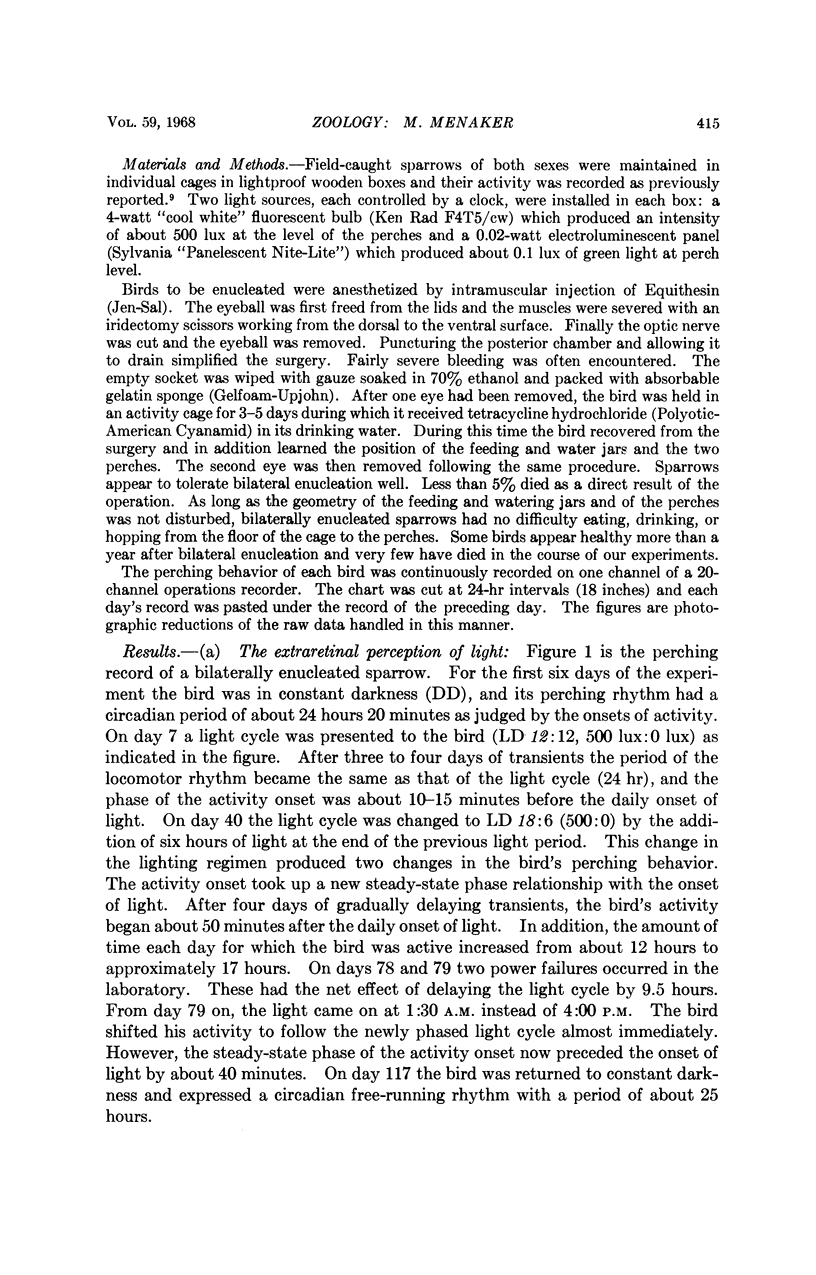
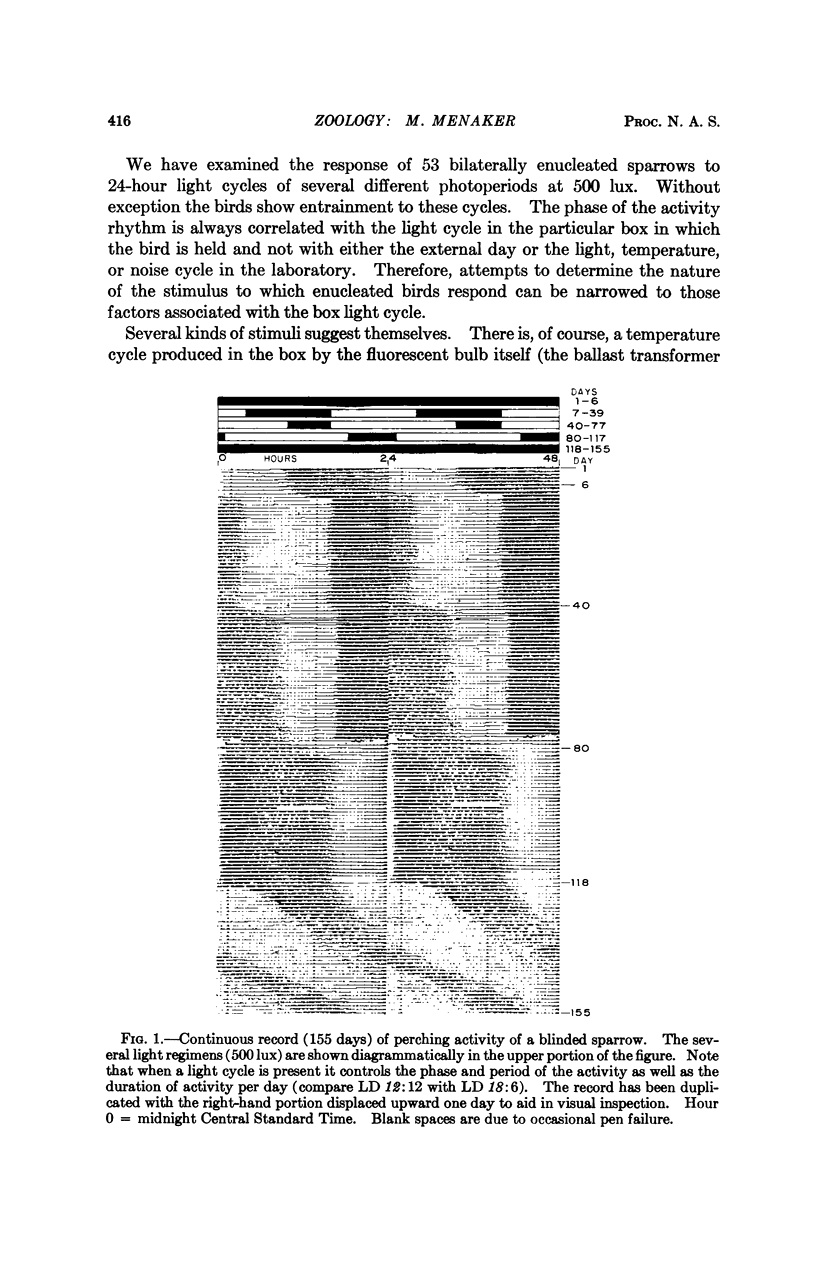
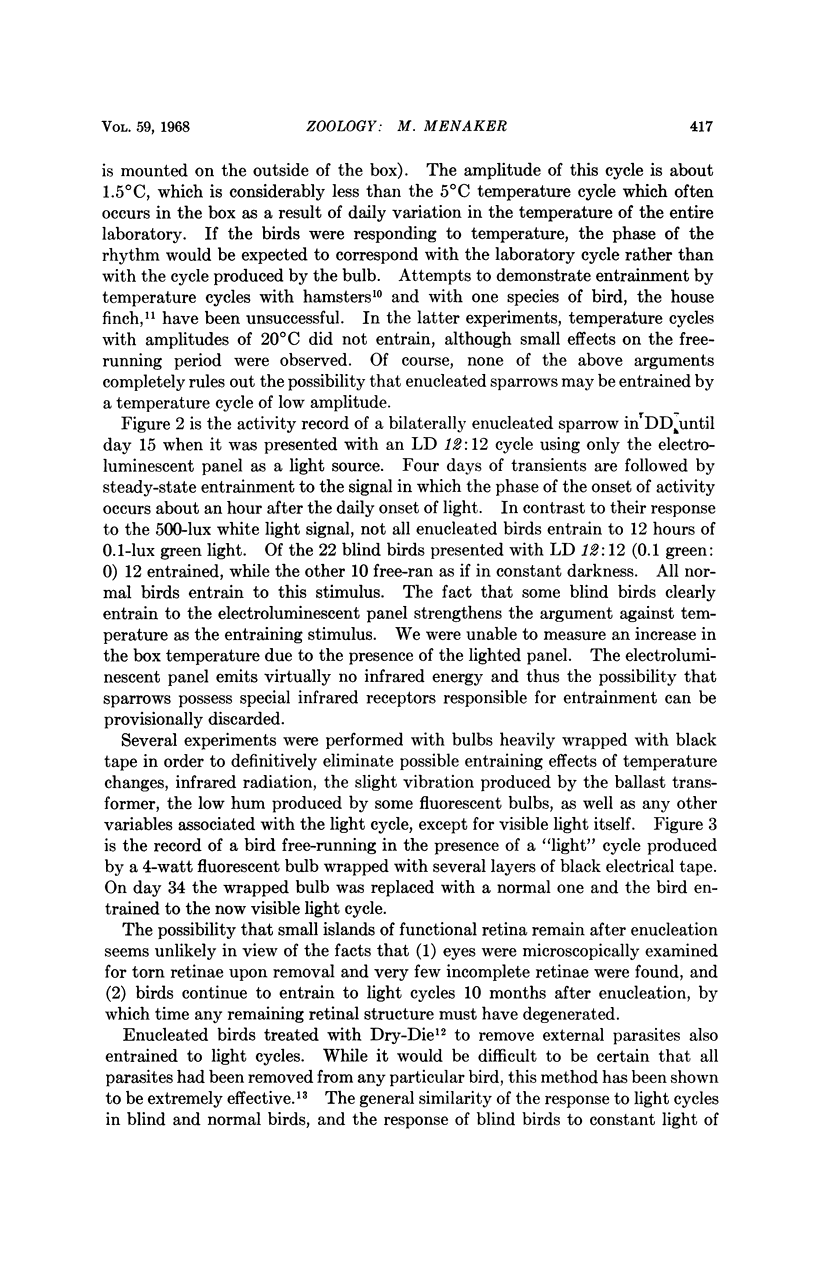
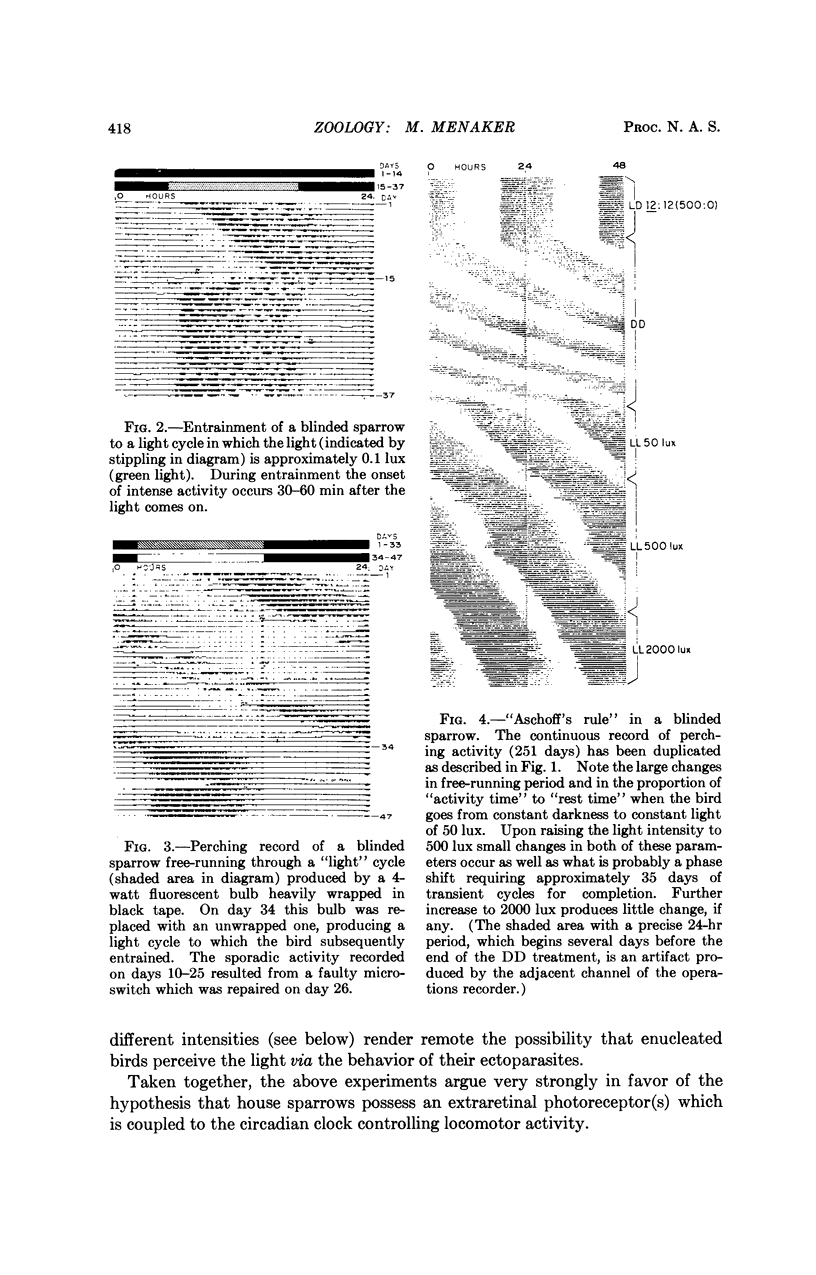
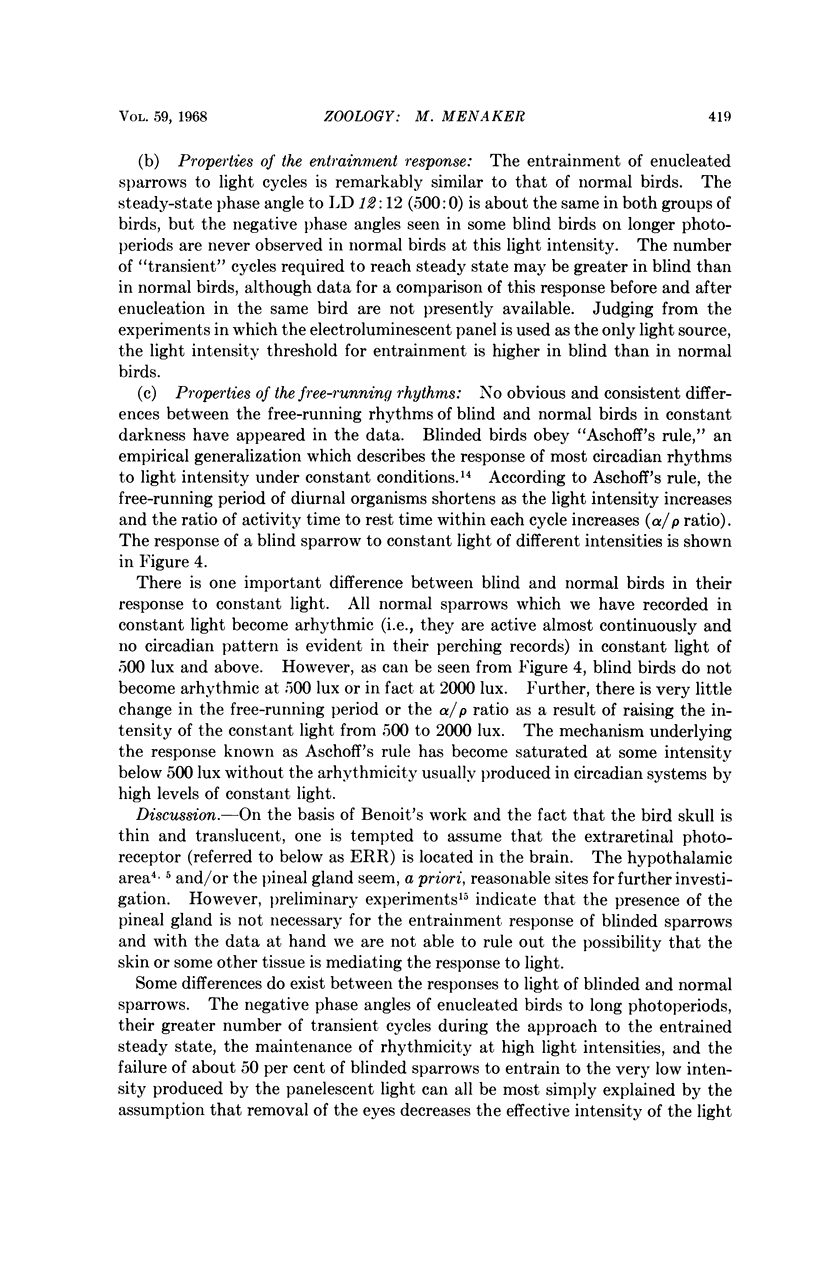
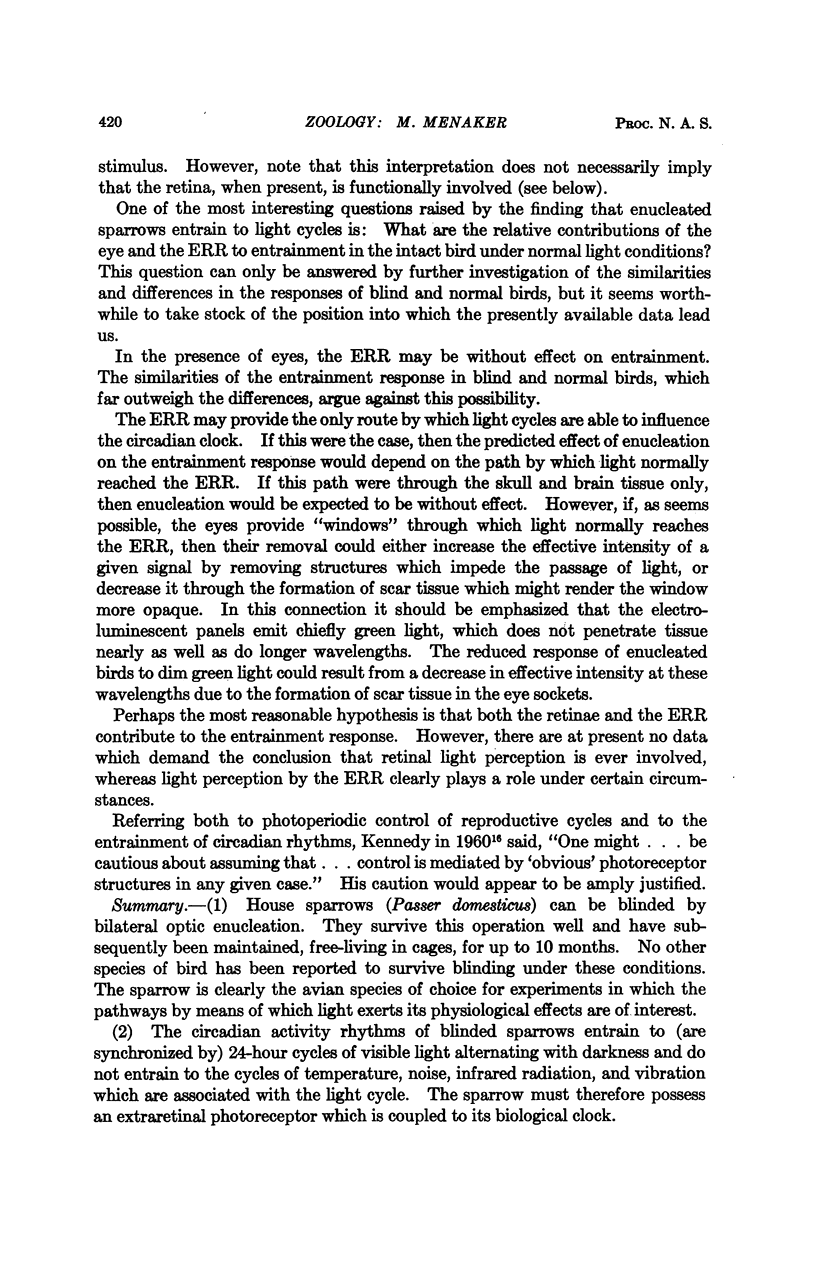
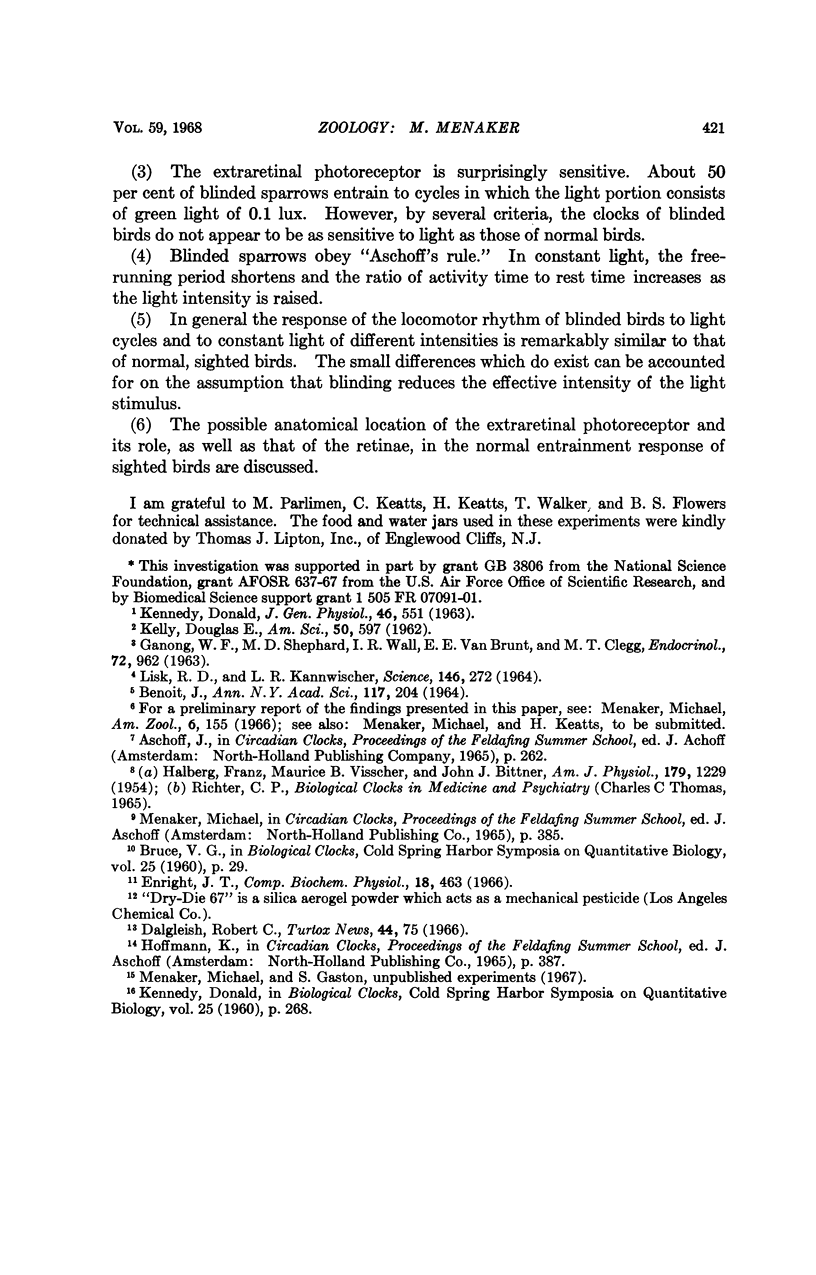
Images in this article
Selected References
These references are in PubMed. This may not be the complete list of references from this article.
- BENOIT J. THE ROLE OF THE EYE AND OF THE HYPOTHALAMUS IN THE PHOTOSTIMULATION OF GONADS IN THE DUCK. Ann N Y Acad Sci. 1964 Sep 10;117:204–216. doi: 10.1111/j.1749-6632.1964.tb48175.x. [DOI] [PubMed] [Google Scholar]
- Enright J. T. Temperature and the free-running circadian rhythm of the house finch. Comp Biochem Physiol. 1966 Jun;18(2):463–475. doi: 10.1016/0010-406x(66)90201-5. [DOI] [PubMed] [Google Scholar]
- GANONG W. F., SHEPHERD M. D., WALL J. R., VAN BRUNT E. E., CLEGG M. T. Penetration of light into the brain of mammals. Endocrinology. 1963 Jun;72:962–963. doi: 10.1210/endo-72-6-962. [DOI] [PubMed] [Google Scholar]
- LISK R. D., KANNWISCHER L. R. LIGHT: EVIDENCE FOR ITS DIRECT EFFECT ON HYPOTHALAMIC NEURONS. Science. 1964 Oct 9;146(3641):272–273. doi: 10.1126/science.146.3641.272. [DOI] [PubMed] [Google Scholar]



